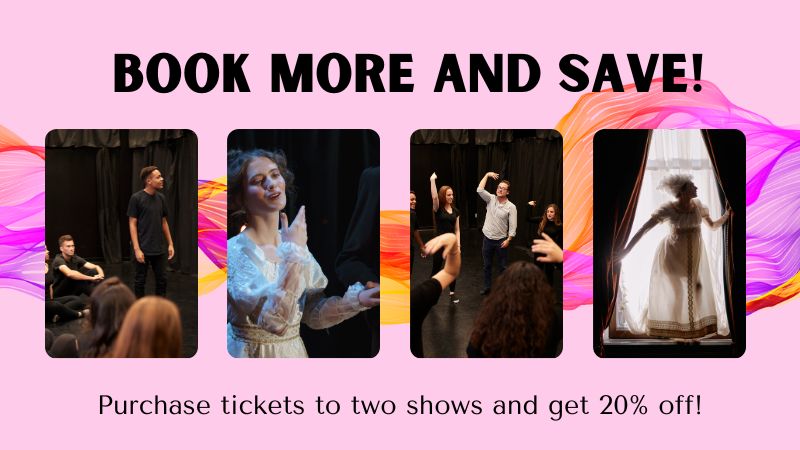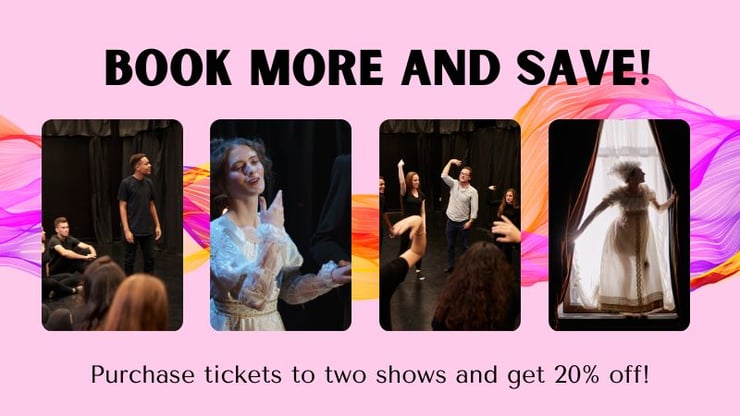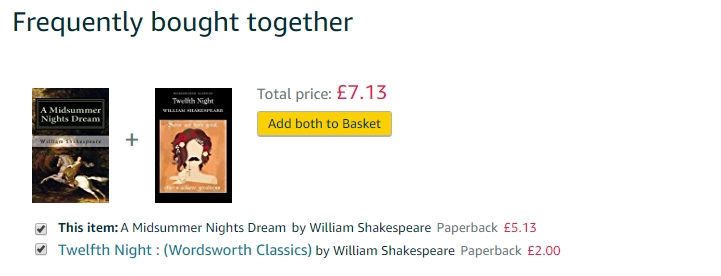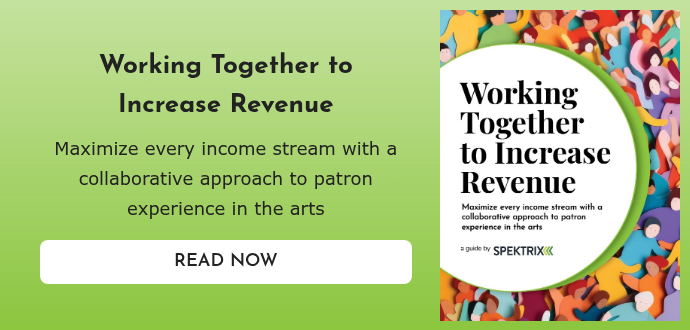5 min read
3 Cross-Selling Strategies to Grow Revenue at Your Arts Organisation

Cross-sell your way to success. Ahead, three data-led cross-selling strategies to drive revenue and reattendance at your arts organisation.
As audience numbers recover from the pandemic, reestablishing audience loyalty and finding ways to drive revenue are top priority. Customer churn, or the percentage of customers who come one year but not the next, presents a big challenge for arts organisations. Cross-selling is a strategy that can help you grow audience loyalty and increase revenue at the same time. By using the tools and data at your disposal, you can maximise revenue from your marketing efforts, identify and develop cross-selling opportunities, and improve experience and reattendance across your customer base.
Why reattendance matters to your arts organisation
The more engaged a customer is with your organisation, the less likely they are to contribute to customer churn. So, by enticing customers to attend multiple events at your organisation in the same season, you’re leading them to increase their overall engagement with your organisation, which makes them statistically less likely to churn.
Encouraging customers to attend multiple events at your organisation also has the added bonus of decreasing your marketing cost per ticket sold. Think about it: if your marketing costs stay the same, but a portion of those audience members who would have purchased a single ticket are enticed to buy an additional ticket, your marketing cost per ticket has just decreased by 50%.
Customer reattendance has marketing benefits beyond reducing your marketing cost per ticket. The more events and performances an audience member attends, the more you will learn about their interests and purchasing habits. This information is valuable data that you can use to accurately target messaging and offers towards them in the future. You’ll be empowered to serve them the offers they really want, which means you’ll spend less to get them to buy a ticket in the future. Best-case scenario, reattenders not only increase your return on investment from marketing budgets in the current year, but will continue to cost less to market to in subsequent years.
So, how do we get some of those one-time visitors to reattend? First, we have to make sure they know what other performances are available at your venue. Second, if we want them to take a chance on an event that might be out of their usual comfort zone – say, a musical lover is considering taking a chance on a comedy show – we need to offer them tickets at a price that feels comfortable given the risk that they may not love this new genre. Enter: the multibuy cross-sell.

1. Cross-sell with multibuy offers
A multibuy works by offering customers a discount on their tickets if they purchase tickets to multiple events. It’s a form of bundling that allows the customers themselves to decide which shows to group together.
For example, let's say a customer purchases tickets for a popular musical theater event in your spring season. You have another, less well known, musical coming to your venue later in the summer. Your customer might not buy those second tickets on their own, but, if you offer these tickets to them at a discount when they're already in the checkout flow for the big-name event, they might go ahead and choose to buy both together.
But the multibuy offer won’t work if your customers aren’t aware of all of the other exciting events happening at your organisation. Therefore, we need to find ways to alert our customers about the other shows playing so that by the time they’re presented with the multibuy offer, they’re familiar with the other shows available and maybe even willing to give one a shot. For this challenge, we need to cross-sell. Cross-selling is the act of selling an additional, similar product to the same customer.

A quintessential example of cross-selling comes from the online retail king Amazon, which attributes 35% of its revenue to this marketing strategy. You may have experienced a cross-selling offer yourself while online shopping. If you add a copy of ‘A Midsummer Night’s Dream’ to your virtual cart, you might see options to purchase another Shakespeare play, like ‘Twelfth Night’, as well. This kind of offer is persuasive because it’s a small ask that will hopefully add value for a customer who might be interested in expanding their library.
How cross-selling and multibuy offers can work together
Now that we’ve defined them, what impact should we expect from combining cross-selling with multibuy discounts? Lets look at a hypothetical example which assumes that:
- 20% of ticket buyers purchase two tickets through your multibuy offer
- The offer provides a 20% discount on ticket prices
- There’s no change to your marketing budget

In this example, you would achieve
- A 15% increase in net revenue (Total revenue minus marketing costs, or £46,000 rather than £40,000)
- A 17% increase in marketing efficiency (marketing expense per ticket sold, £8.33 rather than £10)
- And of course, an increased level of engagement with your arts organisation
If we think about the potential long-term impact of this approach, we can see that over time, that marketing cost per ticket could continue to decrease, because you’ll get better and better at targeting the customers who purchase more tickets.
2. Let your theater marketing emails do the heavy lifting
If you’re not able to cross-sell on your website, you can still use the data you collect from online ticket sales to generate targeted offer emails to customers. You can do this before or after the customer has seen the show, but be sure to be as targeted as possible to avoid unsubscribes. Remember, every email you send should offer value to the recipient.
What can you cross-sell with an email offer? A great idea of a cross-sell to offer through email is a dining experience. Let's say you have an early booker who purchases tickets eight weeks before a show. They might not want to commit to booking a dining package right then and there, but they might be interested in doing so at a time closer to the show. With an email cross-sell offer, you can make that offer at a time that makes the most sense for your patrons.
Analyse your ticket sales to find ticket holders who haven’t yet pre-ordered a dining package or drinks deal and push the offer to them in a tailored pre-show email a week before the show. You can also make a special offer to a first time attendee. Consider offering first timers a welcome discount at the bar or sharing your menu to encourage them to sample the food your venue offers.
3. Use cross-selling strategies on your website to drive revenue
Online sales account for a very large percentage of total ticket sales – on average, 73% of transactions for tickets, donations, memberships, and more take place online. This means your digital customer journey presents a fantastic opportunity to show your audience that your venue has so much more to offer than just tickets. Invest in making sure that the online user experience is easy and even delightful. We take great care of our audiences in our venues, we should also take care of them in our digital space.
From snacks to show programmes, think about how you cross-sell food, drink, and merchandise along your online purchase path to make them easily available to customers. If you’d like to see a higher uptake of these items online, why not try having online-specific discounts to encourage customers?
Managing stock and effectively cross-selling to all customers is difficult during the mayhem of a busy season. By cross-selling things like food, drink, and merchandise in advance, you can boost secondary spend while freeing up your team’s time on busy show nights.
Don’t forget! You don’t have to cross-sell everything...
Take the time to think about what shows, films or concerts in your current season will pair well with others. Amazon’s cross-selling engine works because they have taken care to think about what will cross-sell well. Use your CRM data, and your own knowledge of your program, to decide which shows may need a sales boost, which genres may attract similar audiences, and design an incentives plan which makes sense for you and your patrons.
 Allegra Markson (she/her) is Head of Business Development at Spektrix.
Allegra Markson (she/her) is Head of Business Development at Spektrix.



